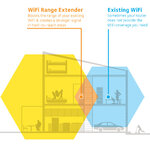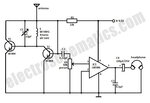JuanJuan
Junior Member level 1
Hello everyone. I'm trying to do something like this:
https://www.amazon.com/TP-LINK-Wi-F...8&qid=1454454779&sr=1-2&keywords=wifi+booster
for a university project, but I can't find the information I need. I'm not from any English speaker country, so maybe I'm searching in a wrong way, because I only find some basic ways to extend wifi (like putting a can around the router).
Can anyone help me?
Thanks!!!!!
- - - Updated - - -
I need the project to be absolutely ANALOG. Is that possible?
https://www.amazon.com/TP-LINK-Wi-F...8&qid=1454454779&sr=1-2&keywords=wifi+booster
for a university project, but I can't find the information I need. I'm not from any English speaker country, so maybe I'm searching in a wrong way, because I only find some basic ways to extend wifi (like putting a can around the router).
Can anyone help me?
Thanks!!!!!
- - - Updated - - -
I need the project to be absolutely ANALOG. Is that possible?



